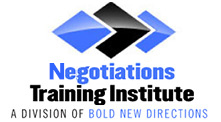Time is a fundamental element of negotiation, often used as a condition by the negotiator. Time can be strategic, used by the negotiator to achieve a goal. Time can also affect many aspects of negotiation, such as outcomes, motivation, and even choice of tactics. Time pressure can be used to produce greater cooperation and faster agreements, thus making it a powerful negotiating tool.
Time Pressure Can Lead to Results
Think about a time when you went shopping and saw a sweater you really wanted. Next to the rack was a sign that said, “Sale…today only!” Did you end up buying the sweater? Chances are you were persuaded to act quickly because of time pressure. You worried that if you didn’t buy the sweater that day, you would be missing out on a great deal. This same logic applies to business negotiations. The salesperson can motivate the customer to act simply by applying time constraints. “I must have an answer today.” “We can only offer this price until tomorrow.” “Our inventory is running low so you better act now.”
Time pressure is effective because if a deal is made over a short period of time, this gives the buyer less time to shop around or reconsider the offer. The key, then, is for the salesperson to know and leverage the time window in order to optimize their position.
Never Negotiate Until You Know They are Ready to Make a Decision
If you have ever visited a car dealership, you were likely approached by a salesperson asking if you needed any help. If you replied, “I’m just browsing today,” there’s a high probability that the salesperson left you to browse. On the other hand, if you replied, “I’m browsing because I really need a new car this weekend,” the salesperson likely never left your side. That’s because they knew you were in a place where you were ready to make a decision. The most effective way to use time is to never even begin negotiations until you know the person you are dealing with is ready to make a decision, and it should be done in a short period of time. The more time the other person has to make the decision, the longer it will take. So, always start by asking the customer what their timeline is for making a decision.
